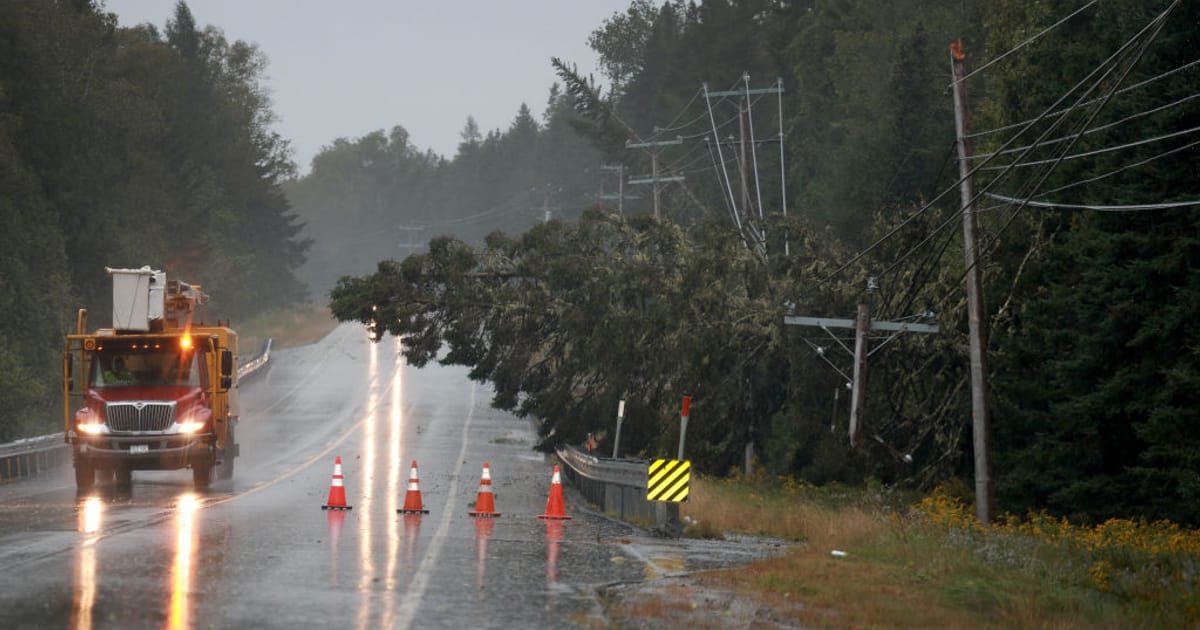This isolated town in Maine could be a model for the clean energy…
November 29, 2024

This story was first published by Inside Climate News.
If you trace the path of one electrical transmission line up the coast of Maine, through and around the state’s rocky outcroppings and over a long causeway, you’ll finally reach the island city of Eastport, 40 miles from the transmission line’s origin. Here, at the line’s terminus, sits the U.S.’s easternmost city and the East Coast’s deepest port, once a thriving hub of imports by sea.
Today, the city is home to about 1,300 residents, who are no strangers to the harsh winds and strong rains that give remote islands like this one their rugged character. When big storms rip through, as back-to-back nor’easters did this January, Eastport loses its sole tenuous connection to electricity from the mainland. In 2018, the city’s backup diesel generator shut down and was never replaced, leaving residents to buy their own gas generators or sit in the dark and wait out the hours until the utility could restore power.
“We’re yankees. We’re used to it. We got candles and lanterns stashed away, and we usually get a bucket of water when it looks like the power is going to go out,” said Jeanne Peacock, an Eastport city councilor and founding member of the city’s energy committee. “But it would be nice for everybody else if that didn’t happen.”
The quest to make Eastport energy resilient has put the city at the forefront of Maine’s renewable energy transition and made it a leader in energy independence work for remote communities in the state and beyond.
In 2021, the city was awarded an Energy Transitions Initiative Partnership Project grant from the Department of Energy, which funded work to develop localized energy generation and storage.
Now, a community-driven initiative is developing solar and tidal power to feed a microgrid. It would allow the island community to weather hours of outages, detached from the main electrical grid without the high costs and carbon footprint of diesel. The grant launched the feasibility studies and produced the plans for the transition that Eastport is in the middle of building out.
“This very small city on the very eastern edge of the United States is developing what would be a world-class energy facility,” said Nick Battista, the chief policy officer at the Island Institute, a Maine-based nonprofit that assisted Eastport in applying for the grant and is working to continue its implementation.
As further grants and planning come through, they may adjust the existing proposal. In September, Eastport received $200,000 in its second round of funding through the DOE’s Energizing Rural Communities Prize.
This time, five other Maine coastal communities received the same grant to follow suit in starting their own islands’ electrification and resilience projects. In addition to islands like Eastport, which is connected to the mainland by a causeway, Maine has 15 unbridged coastal islands with year-round inhabitants, where people draw energy from individual generators, larger community generators, or through long cables connected to the mainland. Some of these island towns, like Isle au Haut and Islesboro, have already been working alongside Eastport to design similar resilience projects adapted to their own landscapes’ needs.
The work is picking up right as the energy world turns even more attention to the need for energy resilience on island communities. This summer, the International Energy Agency released a report describing how islands’ investment in “distributed energy sources” — which rely on microgrids and battery storage — play an important role in global decarbonization while bolstering island resilience and affordability.
The fact that Eastport is at the literal end of the line in terms of electricity transmission makes the city a perfect contender for a microgrid, said Judy Long, the communications director of Versant Power, which operates the transmission line. Because the city is so remote, there is no room for redundancies in case of outages; there are no other sources that can feed energy into the city’s existing line.
A microgrid would work as such a source. Electricity generated on the island would feed into a battery array, which would feed into the microgrid. The microgrid would remain connected to the regular electrical grid and run as normal when times are good. In the event of a storm or interruption, the microgrid could “island off” for three to four hours — which is the average duration of an outage — allowing residents to flick on their lights, run their refrigerators and heat their homes as normal.
The work requires various parts locking together: The solar, the tidal, the battery, and the grid itself all must coordinate. In January, Eastport Community Solar’s 1 MW solar array will go online. It will join an existing 1.8 MW of distributed solar on Eastport. Because of the seasonal and weather variations of solar, the distributed solar alone will not be enough.
Search
RECENT PRESS RELEASES
Related Post




